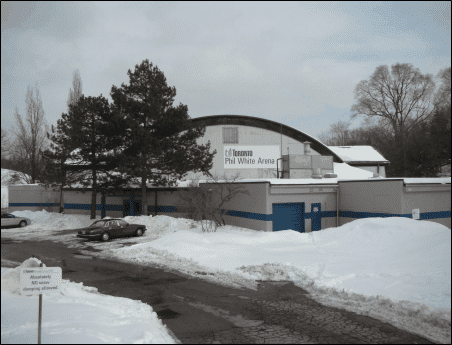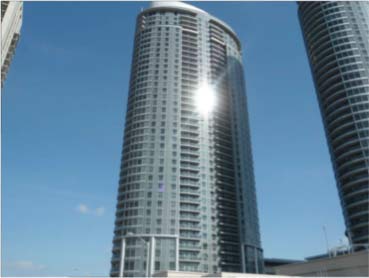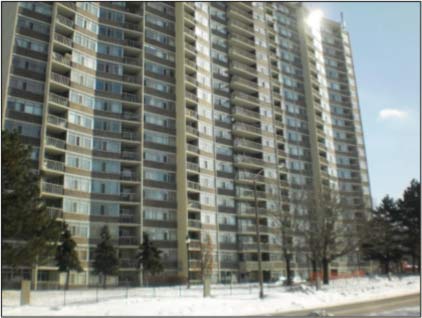Building condition assessments are carried out for a number of reasons associated with reserve funding, financing, repair maintenance safety, energy conservation, and accessibility by handicapped people. They can be broadly grouped into seven categories:
- Building condition assessment to identify future (reserve) funding requirements.
- Building condition assessment for due diligence, insurance, mortgage or vendor purposes.

- Evaluation of the “as built” condition of a new building.
- Evaluation of Fire Safety Systems.
- Energy consumption audit.
- Elevation of the condition of a building, or part of a building, in need of repair or renovation.
- Evaluation of accessibility by handicapped people.
A comprehensive building assessment should include the structure, envelope, mechanical equipment, electrical systems, interior finishes, life safety, elevators, pavements and function in terms of accessibility by handicapped people. The difference between condominium building and rental or no-profit housing buildings is that with the latter, the appliances and in suite components of the building must be included.
A reserve fund study is money earmarked for major repairs and total replacement of the various building components; the roof, windows, doors, exterior cladding (brick veneer, precast concrete, metal siding, and panelized systems), sewers, heating and cooling systems, fire safety systems, electrical and mechanical systems, paving, landscaping and parking facilities. But how much do you need to reserve?
The amount required is identified in a reserve fund study. Such a study will provide a realistic assessment of the amount of money required from time to time to meet the major repair and replacement costs that will arise in the future.
Trained Professionals
Each component of the building requires special attention and must be reviewed by a professional trained and experienced in the required field. For this reason, a number of professionals should be involved in the assessment of a building, each with the specialized experience to ensure that all aspects of the condition assessment are properly addressed.
For example, the Ontario Fire Code makes the upgrading of the fire safety systems in older buildings mandatory. The requirements detailed in the Ontario Regulation 627/92, Fire Code governs the work with the level of enforcement and upgrade varying between different municipalities.
For buildings with CFC chillers new accelerated legislation affects how we must set aside appropriate funds more than the age or condition of the equipment.
History
Before undertaking an inspection of a building, the following preliminary work is normally undertaken:
- Design Document Review. Prior to commencement of any investigation, the project engineering and architectural drawings must be reviewed.
- Post Occupancy Document Review. The review of all available previous inspection reports, together with any complaints made by the occupants of the units. A review of the maintenance records and energy and water consumption records also may provide additional information which could assist in the investigation.
- Interview. Interviews with the building manager and occupants often provide useful information.
Inspection
The inspection should be carried out taking into account all physical operating and functional requirements and should be designed to identify the condition of each building component establishing regulatory compliance with the respective building code. The information obtained during the Building Condition Assessment is then utilized in the Reserve Fund Study.
Reserve Fund Study
Prudent management of a building includes the predication of future significant maintenance and replacement costs together with ensuring that sufficient funds are available to cover those costs. Condominium corporations address the requirement by regular funding of a reserve fund with the cash flow projected over 30 years. Due diligence reports for lending institutions or purchasers normally limit the cash flow protection to 5 to 10 years. Social Housing providers establish a 20 to 50 year maintenance and replacement cost protection. Building components can be separated into two categories for reserve funding purposes. Namely those with a predictable economic service life expectancy and those without.
Predictable Service Life
Components with a predictable service life-such as roofs and caulking require funds to be reserved for both future repairs and eventful replacement. The timing of these events can normally be predicted with reasonable accuracy.
“Indefinite” Service Life
While it is generally not necessary to reserve funds for the full replacement cost of those components that should not deteriorate significantly during design service life of the building, foundations, interior walls and floor slabs, for example, it would be overly optimistic to anticipate that they will never require repairing. Such an event must be allowed for in the reserve fund as a “contingency” cost which is normally taken as an arbitrary percentage of replacement cost.
Interest and Inflation Rates
After capital costs and life expectancies, interest and inflation rates are the most critical factors in preparing cash flow projections and determining initial contributions. These cannot be accurately determined in advance-which makes difficult realistic projections over a 20 to 50 year period.
What does remain constant is the effect of interest and inflation rates on a reserve fund and its allocations. Interest rates affect the money held in reserve and inflation rates affect replacement costs.Traditionally the interest rate is approximately twice the inflation rate and this ratio should be reflected in the reserve fund study projection. Also, important is the spread between the two.
Updates
A reserve fund study should be updated regularly. Under the Condominium act (1998), it is mandatory to update reserve fund studies at least every 3 years after a comprehensive study is undertaken (class 1). The first update should be without a site visit (class 2). The following update should include another major component inspection, which will determine whether components are aging as predicted and provides an opportunity to revise estimated like expectancies and to change the assumed interest and inflation rates to reflect current economic conditions.
Replacement Costs (Cash Flow Project)
 A typical reserve fund study includes a 30 year Itemized Expenditure Schedule and, if required a cash flow table.
A typical reserve fund study includes a 30 year Itemized Expenditure Schedule and, if required a cash flow table.
The itemized Expenditure Schedule lists all the building components (common elements) together their estimated remaining life expectancy and replacement costs.
The Cash Flow Table gives a projection of the amount in reserve reach year taking into account the annual contribution and the assumed interest and inflation rates.
Initial Contribution
In the event the reserve for replacement and maintenance cost is found to be inadequate at the time the reserve fund study is carried out then either an initial one time only major contribution will be required or provision for the shortfall made in some other way as expenditures make it necessary. The Condominium Act makes the contribution to the reserve fund of any shortfall amount mandatory will allowance for the catch up period to be extended over a maximum of ten years for existing condominiums and 1 year for those registered after May 2001.
Ask for a free proposal for your next building engineering project. Call us toll free at 1-888-348-8991.

